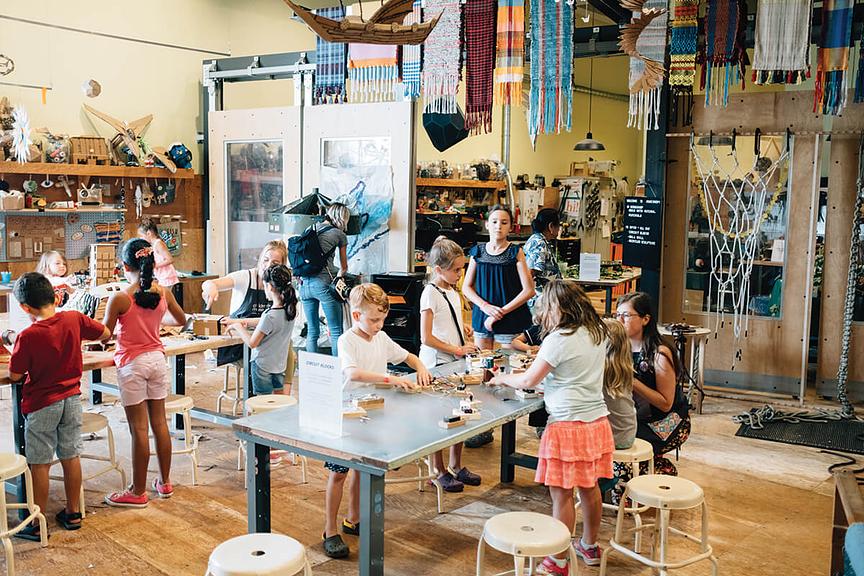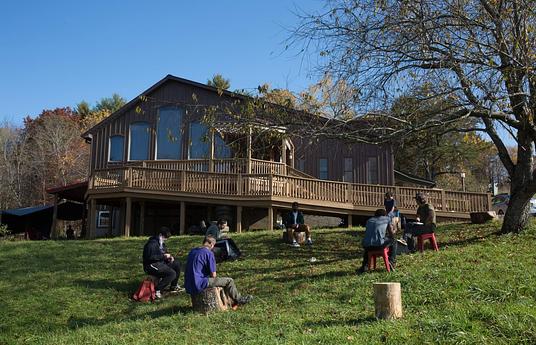In 2011, the Children’s Museum of Pittsburgh partnered with learning researchers to design a new kind of museum exhibit. In this space, young patrons would explore real tools, materials, and processes while museum educators investigated the practices and possibilities of maker learning. The result was the first museum makerspace: MAKESHOP.
At MAKESHOP, materials like cardboard, plastic food containers, old clothes, scrap lumber, and broken toys find new purposes and uses, taking on a new and different life with the help of tools and imagination.
While visitors are weaving on the MAKESHOP’s loom, building cardboard creations, and creating stop-motion animations, museum educators are testing principles of materials exploration, investigating strategies for supporting learning, and refining the practice of maker education.
How can museums help educators implement maker learning?
What happens at MAKESHOP reaches far beyond the walls of the museum. MAKESHOP has become a hub for maker-learning resources, equipping educators from around the world with tools to integrate making into their unique learning context.
MAKESHOP staff have identified seven core learning practices that empirically describe children’s engagement in MAKESHOP, creating a common language around making as a learning process.
Through partnerships with Maker Ed, Google, the Institute of Museum and Library Services, the National Science Foundation, and others, MAKESHOP has supported the design and creation of hundreds of makerspaces across the world, and provided resources and professional development to thousands of educators.



